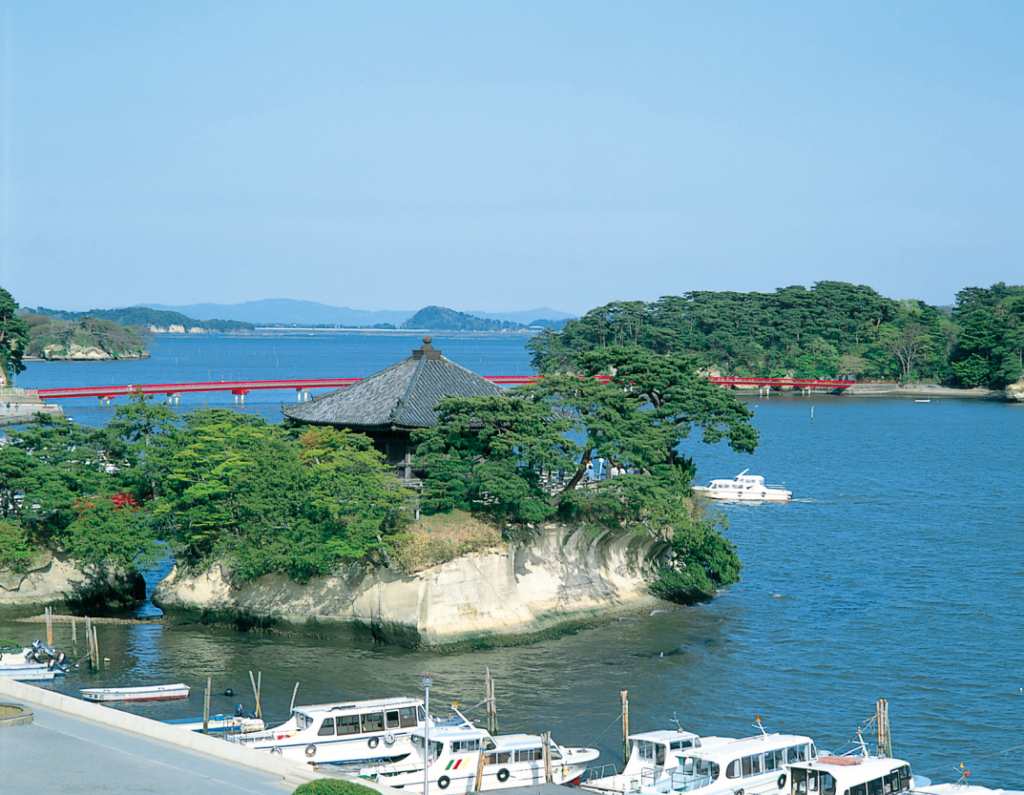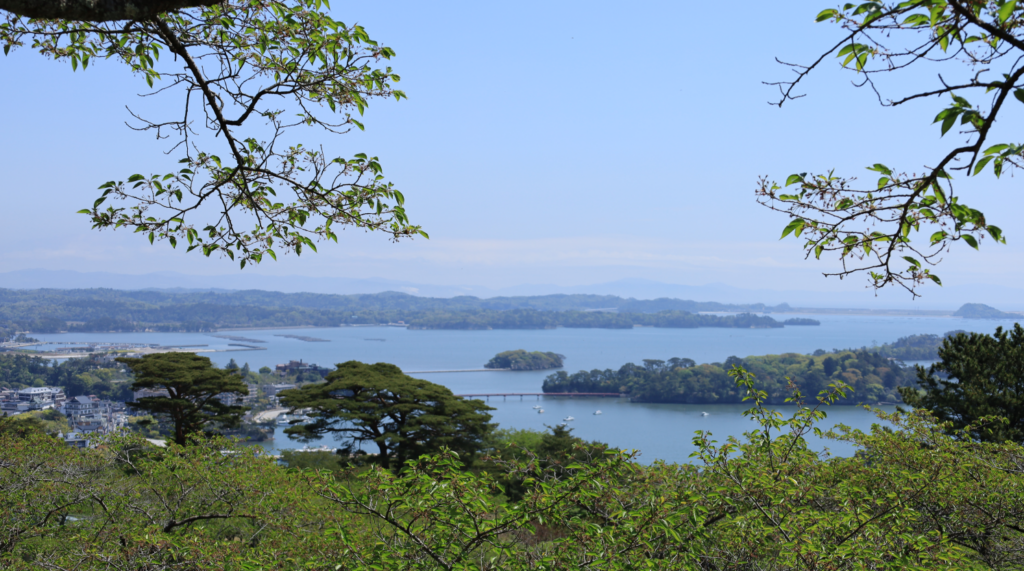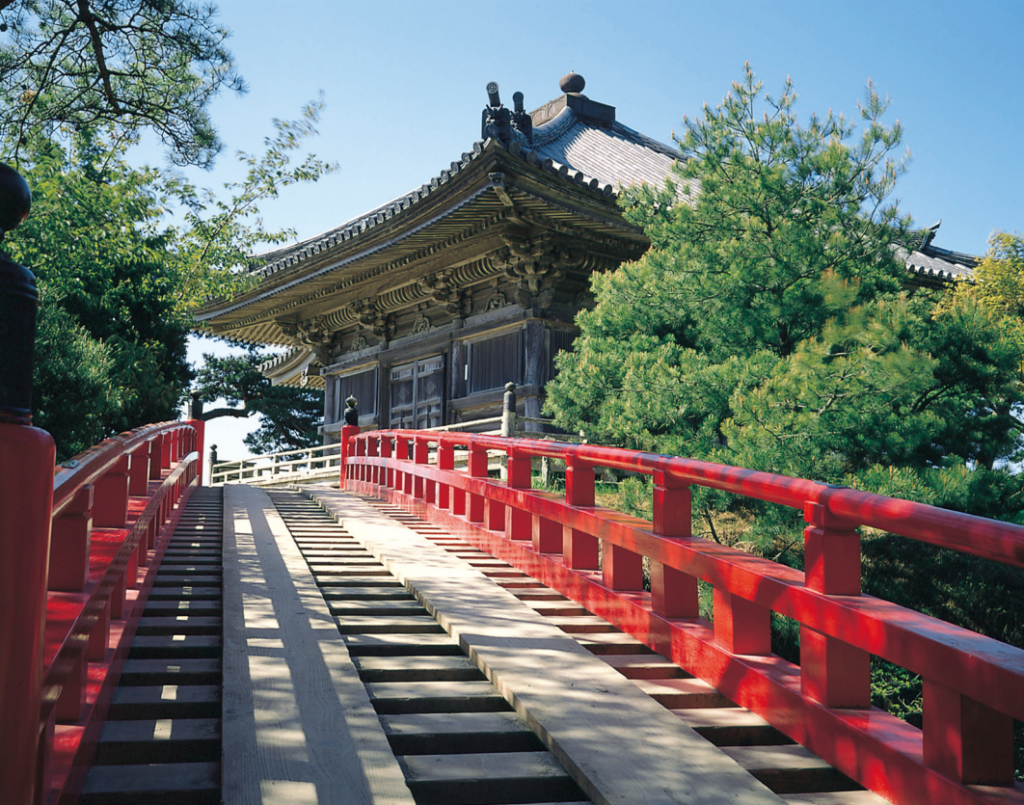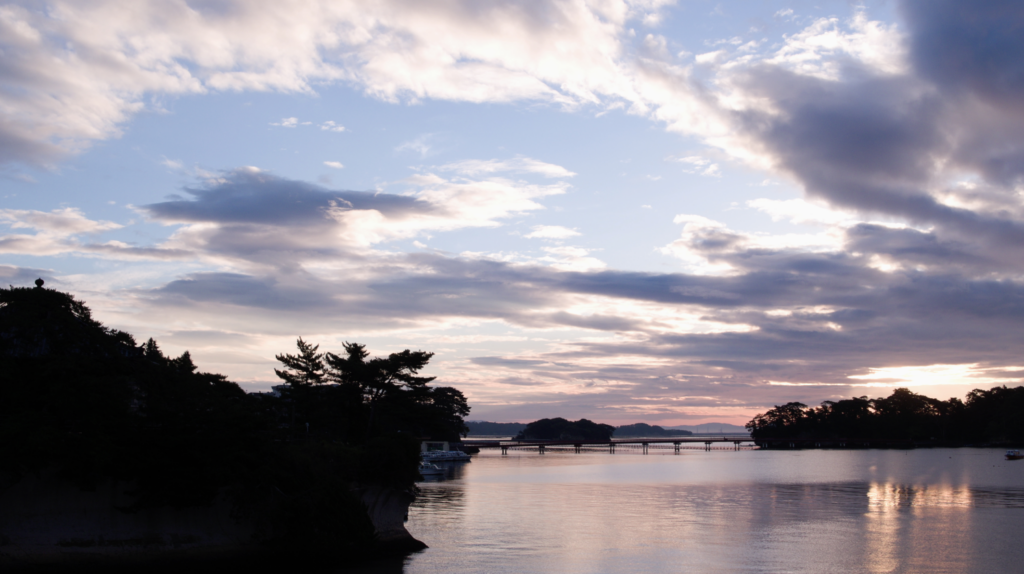Excursion (on Apr. 18)
Those who have applied to attend Excursion on April 18 should come to the conference venue “Sakura Hall” by 9:00 AM, with the Name Badge on!
We have prepared attractive excursions for you. Please feel free to join us.
(*Everything is free, but please note that the number of tickets is limited, and the tickets are served on a first-come-first-served basis. In case there are more applications than we can accept, we will then arrange another tour considering the exceeding number of people.)
Conference place (SAKURA Hall, Departure time 9:00) ⇒ Saigyo Modoshi No Matsu Park(Meet at the bus at 10:50), Walking around Matsushima, Lunch at Hotel Matsushima TAIKANSO, Pleasure Boat ⇒ Sendai Station (Arrival time 15:30)
(*Scheduled times are estimates.)
Saigyo Modoshi No Matsu Park in Matsushima
A famous cherry blossom viewing spot where approximately 260 Yoshino cherry trees are in full bloom. From the observation deck, you can enjoy cherry blossoms along with the beautiful Matsushima Bay, one of the three most scenic views in Japan.
Cherry blossoms are of great interest in Japan due to their symbolism and the custom of cherry blossom viewing known as “Hanami”. Therefore, in Japan, the advancing front is also the subject of regular coverage by major news agencies. The cherry blossom front (Sakura front, Sakura Zensen) refers to the progress of cherry blossom blooming throughout Japan. The Japan Meteorological Agency records flowering and full bloom from late March in Kyushu to mid-May in Hokkaido. In Sendai, it usually starts blooming in the first week of April and reaches full bloom in about a week. We hope that it will be in full bloom when you visit iWAT2024.


Lunch at Hotel Matsushima TAIKANSO
A full-course meal that you can casually enjoy. Focusing on seafood from the waters around Sanriku. Enjoy the view of Matsushima at the observatory restaurant “Shiosai” on the top floor. “Shiosai(潮騒)” is the sound of waves making waves when the tide is rising.


Walking around Matsushima, Pleasure Boat
Matsushima has been long celebrated as a place of romance, spirituality, and elegance. Come ftlr the landscape of 260 pine-covered islands. Since the Edo period some 400 years ago, Matsushima has been known as one of the “Three Most Scenic Spots of Japan.” along with Miyajima (Hiroshima) and Amanohashi date (Kyoto). Recently, Matsushima has also been recognized internationally. In 2013, Matsushima became the first bay in Japan to be accepted into the “Most Beautiful Bays in the World” association, joining well-known bays including Mont Saint-Michel.
Spring brings pink cherry blossoms followed by a fresh green of new leaves throughout the town. Fall transforms the leaves into dazzling yellows and reds. In winter, Godeido Temple and the islands stand out with a pure white snow. Even night adds a new dimension to Matsushima’s beauty. The full moon forms a road of moonlight leading from the bay to the moon. In this shimmering white world, the islands and pine trees exist only as shadows drawn against the sky and water.
The 2011 Great East Japan Earthquake and tsunami greatly affected Matsushima. but the many barrier islands spared it from the destruction and loss of life experienced by other coastal towns. We want to express our deepest gratitude to people from around the world who supported our recovery. Thank you for visiting Matsushima and we hope you will also travel to see the recovery of other coastal towns.




The three most scenic views of Japan are “Amanohashidate” in Kyoto, “Miyajima” in Hiroshima, and “Matsushima” in Miyagi. Among them, Matsushima’s greatest attraction is the magnificent scenery created by nature. Matsushima is the collective name for over 260 islands floating in and around Matsushima Bay. In the distant past, it was a hill, but due to tectonic movements it subsided, and the tops of the mountains and hills remained on the sea surface, becoming islands. Let’s take a cruise around Matsushima Bay on a sightseeing boat. Approximately 50 minutes.



